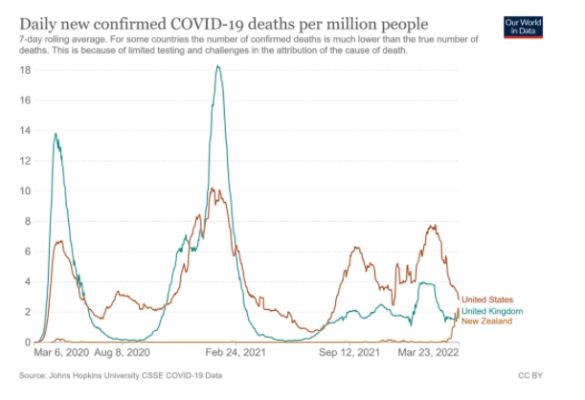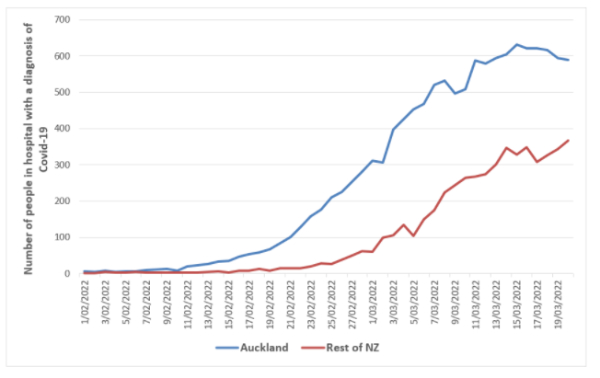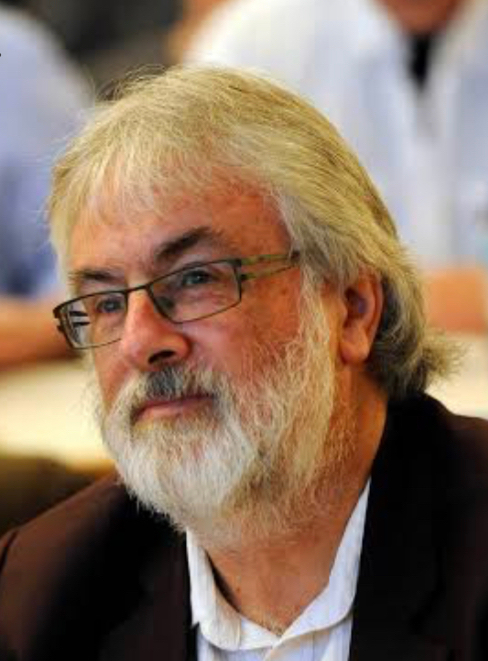As my ‘love affair’ with New Zealand Aotearoa’s public health system grew over many years I learnt to pick up on a few soundbites that aptly summarised it. One was that if something made good clinical sense it would also make good financial sense.
With the arrival of the coronavirus pandemic (Covid-19) in March 2020 Prime Minister Jacinda Ardern’s government took the advice of experts which, in effect, meant adopting the principle that what made good public health sense also made good economic sense.
Good public health and economic sense
This led to New Zealand’s successful elimination (zero tolerance) strategy towards community transmission. The outcome was both one of the lowest Covid-19 mortality rates in the world and the best performing economy in the Organisation of Economic Cooperation and Development.
Strong active political leadership continued when the Delta variant of Covid-19 hit our shores in July last year and right up towards the end of September. Then the Government unfortunately accepted overconfident advice from the Ministry of Health to lower Auckland’s alert level from four to three (a lesser form of lockdown). Unsurprisingly to many, the declining hospitalisation rate reversed upwards.
The Government can be excused for accepting wrong advice. But it then panicked and made things worse by a confusing abandoning of the elimination strategy in Auckland (thereby increasing the length of total lockdown). Until this time the Government had been affirming correctly that it was ‘following the science’ (ie, the evidence).
But, while this expertise was largely within the health system, most of this was outside the Health Ministry. The public strongly supported the Ardern government’s Covid response because it was seen to be ‘following the science’.
However, this point of departure in late September, not helped by a muddled media presentation, led to public confidence slowly but steadily diminishing. It also marked the turning point for declining poll performances.
The widening gap continued with decisions like replacing the more familiar alert system with the confusing traffic lights system. Now, on 21 March, it took a quantum leap, with Ardern’s announcement of the removal of most restrictions designed to protect against the Omicron variant of Covid-19.
Significantly, according to reported comments from Director-General of Health Dr Ashley Bloomfield, he and his ministry were not asked to provide advice on this issue. Epidemiologists and other experts were even further out of the decision-making loop.
Moving towards laissez-faire
21 March marks the biggest step towards a laissez-faire pandemic response that has prevailed in many developed economies including in Europe and the United Kingdom. Obviously a French expression, laissez-faire is a policy of minimum governmental interference.
Another description is abdication of responsibility while allowing those holding economic power to continuing exercising their power. While usually associated with the economy, laissez-faire is also the opposite of public health measures in pandemic responses.
Not all restrictions are removed – mask wearing and vaccine mandates for the health sector and aged care remain. Further, the removal of restrictions for outdoor activities generally make sense.
But, overall it represents a significant shift towards laissez-faire and closer to the position of the high-risk approach of the National Party (to a lesser extent ACT’s).
Immediate reactions
Newsroom investigative journalist Marc Daalder wrote a skeptical article three days later (24 March): Sceptical analysis of Government’s announcement of removal of restrictions.
Two days later Auckland University microbiologist Associate Professor Siouxsie Wiles had an article published by The Spinoff: Two years since first lockdown.
She provides a good positive outline of the Government’s overall response to Covid-19. This includes a dramatic graph of deaths per million people which shows for much of the time how well Aotearoa compares with the United States and the United Kingdom.
But, alarmingly the graph shows a turn for the worse with these comparative Omicron mortality rates noticeably narrowing.

Dr Wiles warns against abandoning all protections when Omicron cases start to come down because a conceivable outcome, based on recent overseas experience, is that they start to rise again (ie new waves of infections leading again to rising hospitalisations and deaths).
Longer-term effects on children
The University of Otago publishes an excellent blog called Public Health Expert. Written by public health specialists and other relevant experts it is a must read for those who want to know more about population health including pandemic responses.
It is unfortunate for New Zealanders that relevant government ministers, including the Prime Minister either did not consider or disregarded its 9 March posting on children of longer-term (post-acute effects) of Covid-19 in children and ‘long Covid’: Greater efforts needed to protect children from infection.
The authors identify three main groups of post-acute effects on children:
- Multisystem inflammatory syndrome in children, a severe syndrome that occurs from about two weeks after the initial illness. Its peaks typically occur 2-5 weeks after peaks in acute infections.
- Longer-term effects grouped under an umbrella term (‘long Covid’) characterised by symptoms and pathology that persist beyond the acute episode. Almost any organ system can be involved. Common features in children are fatigue, sleep disturbances, headache, poor concentration, and loss of smell or taste.
- Chronic conditions that were known prior to the pandemic and are now being seen with new onset triggered by Covid-19 infection such as damage to heart, lungs, and brain.
For good reason the authors recommend a precautionary approach be taken in order to minimise widespread Covid-19 infection among children. A number of specific measures are proposed, including a lower threshold for closing schools and early childhood facilities with greater support for temporary home learning when community transmission is high.
Radio New Zealand has done an informative interview on the risks of ‘long Covid’ in Nine to Noon in an interview with cellular immunologist Dr Anna Brooks: Warnings about long Covid.
Experts’ advice on what restrictions should remain
Another Public Health Expert published on the same day as the Prime Minister’s announcement (21 March) focusses on what restrictions should remain: Control measures still need to be maintained.
Its authors look at hospitalisations as a more valid indicator of the Omicron peak than daily case numbers. While Auckland’s hospitalisations likely peaked on 15 March we are still waiting for much of the rest of the country to do so. The peaks for patients in intensive care and daily deaths may also be yet to come.
A helpful graph is provided comparing hospitalisation in Auckland with the rest of New Zealand (1 February to 20 March).

With the necessary shift from elimination to mitigation of Omicron transmission (due to its extraordinarily high infection spread) and with the Government’s drift towards laissez-faire, the authors advise caution.
Even though the pandemic wave may be starting to decline, there are still tens of thousands of people being infected every day. Consistent with Siouxsie Wiles, these experts note the international pattern of declining infection numbers followed by increasing numbers under a new wave.
The only thing certain about the medium to long-term trajectory is high uncertainty. Consequently they recommend protective control measures which include the following:
- Raise levels of third dose coverage Covid-19 vaccination coverage. Rather than use the confusing term ‘booster’ (which implies a lower level of importance), specifically require that to be fully vaccinated against Omicron three doses are required. The two-dose requirement was sufficient for the Delta variant but is insufficient for the much more transmissible Omicron.
- Given the serious risks, including ‘long Covid, raise the levels of vaccination coverage among eligible children.
- Continue but upgrade the vaccine pass to three doses. The vaccine pass is important both for the safety of the public from virus transmission and incentivising the third (‘booster’) dose. The current vaccine pass was designed for the Delta variant. If Omicron had not occurred it would now be redundant. But Omicron has come.
- Keep mandatory mask use in key indoor settings, particularly: public transport (including aircraft), all healthcare settings, and in aged-residential care settings. This will also help with preventing other respiratory infections in the coming winter months. To date, the Government appears to still be committed to this.
- Continue making ventilation improvements for indoor environments, notably schools and workplaces.
- Continue to promote people staying at home when unwell and offer support to those who are isolating at home when they test positive for Covid-19.
- Maintain essential border biosecurity measures against Covid-19 by requiring arrivals (non-New Zealanders at least) to be fully vaccinated (ie, three doses) reinforced by a well organised system of testing
Summarising it all
It is important to appreciate that while Covid-19 is a respiratory virus, it is not just a respiratory virus. It does not just effect the respiratory system; somewhere between several and most other organs are at risk of damage.
Until late September 2021 New Zealand’s pandemic response was based on a public health approach which both protected the public’s health and served its economy well. It could genuinely be described as world-leading.
Since then it has gradually evolved towards laissez-faire with the Government’s 21 March announcement marking an acceleration of this evolution. From world-leading we have evolved to world-following.
Claims that we still have among the strongest restrictions in the world (masks and limited mandates) are overstatements given that Aotearoa was one of the last countries that Omicron hit and how we are trending.
To the extent that children, their families and other New Zealanders suffer more or die as a consequence of this evolving laissez-faire approach, responsibility will rest squarely and fairly with the Government. Bending to external political and other pressure does not mitigate this responsibility.
Let us not forget that today (29 March) we had 34 deaths; not only our highest daily number but also higher than the total deaths from the start of the pandemic in March 2020 until the impact of Delta in August 2022.
Perhaps trumping both Marc Daalder and Siouxsie Wiles, the best summation of the Prime Minister’s 21 March announcement, is cartoonist Emma Cook five days later.
If I ruled the pandemic response
Responsibility for the pandemic response, including any abdication, rests with the government of the day. I don’t determine the pandemic response and, unfortunately, neither does Welsh comedian and opera singer Harry Secombe. Advice from Harry Secombe.
But, if I did rule the pandemic response, this is what I would do while Omicron continues to have a significant presence:
- Shift back from laissez-faire to explicitly making public health the central focus of the response. Given the current severity of workforce shortages throughout the economy, the more the health of the public is protected the more economic performance can be improved. It is too early for the economic analysis to be done, but the economic impact of Omicron may well be more severe than official lockdowns.
- Require three vaccine doses before a person can be categorised as fully vaccinated.
- Require vaccine passes (fully vaccinated for Omicron) for keey indoor facilities including cafes.
- Only vaccinated children allowed to attend school (online home support for unvaccinated children). With already more than 200,000 children staying home from school every day this month during the Omicron surge, this is hardly going to more disruptive for children and teachers. Unvaccinated children disproportionately spread the virus. Being infected by Omicron also delays access to vaccination for children. This also impedes access to spread to themselves and others.
- Vaccine mandates for schools should be reintroduced particularly for those required to interact with children and other staff.
- Provide effective respiratory masks free to all as recommended by Associate Professor Collin Tukuitonga (University of Auckland).
The Government needs to adopt a strategic pandemic response that is rooted in public health. This makes good sense for the health and well-being of the public; it makes good sense for the economy; and it is likely to make good electoral sense as well.



 Peter Dunne: Dunne's Weekly - It's An Election, Not A Coronation
Peter Dunne: Dunne's Weekly - It's An Election, Not A Coronation Ian Powell: The Dirtiest Of Politics And A Tale Of Two MPs Cloaked In Hypocrisy
Ian Powell: The Dirtiest Of Politics And A Tale Of Two MPs Cloaked In Hypocrisy Gordon Campbell: On A Neglected, Enduring Aspect Of The Francis Era
Gordon Campbell: On A Neglected, Enduring Aspect Of The Francis Era Eugene Doyle: 50 Years After The “Fall” Of Saigon - From Triumph To Trump
Eugene Doyle: 50 Years After The “Fall” Of Saigon - From Triumph To Trump Lynley Tulloch: Pulling The Mat Out From Under The Early Childhood Education (ECE) Sector
Lynley Tulloch: Pulling The Mat Out From Under The Early Childhood Education (ECE) Sector Howard Davis: NZSQ Inaugurates Wellington Chamber Music’s New Season
Howard Davis: NZSQ Inaugurates Wellington Chamber Music’s New Season